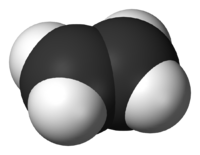
Photo from wikipedia
A method was developed to study micromechanics of a bond point in nonwoven polypropylene materials. The micromechanical behavior of the thermal bonded nonwovens was studied using the digital image correlation… Click to show full abstract
A method was developed to study micromechanics of a bond point in nonwoven polypropylene materials. The micromechanical behavior of the thermal bonded nonwovens was studied using the digital image correlation (DIC) technique to understand the bond points deformation during mechanical stretching. An electrospray technique was used as a fast and reliable method to create the speckle pattern on the nonwovens. Various parameters of the electrospraying and their influence on the pattern accuracy and repeatability was studied and the best pattern in terms of dot size and distribution was determined from experimentation. Plasma treatment also proved to be essential to enhance the uniform distribution and adherence of the particles on the surface. Unloaded DIC experiments were carried out and proved the accuracy of technique with errors of lower than 0.5% strain. An automated high-resolution tensile apparatus was built and loaded DIC experiments were carried out using the device. The fabric was tested in Machine Direction (MD) direction and Cross Direction (CD) directions, both showing good correlation with low errors. Average strain values in bond points were plotted against total strain in fabric and the results showed noticeable amounts of strains developed in the bond points, contradictory to most of the FEM models which consider no deformation in the bond points. Results also indicated that in MD direction deformation, bond points can experience more than 30% of the overall strain presented in the fabric.
Journal Title: Journal of Composite Materials
Year Published: 2022
Link to full text (if available)
Share on Social Media: Sign Up to like & get
recommendations!